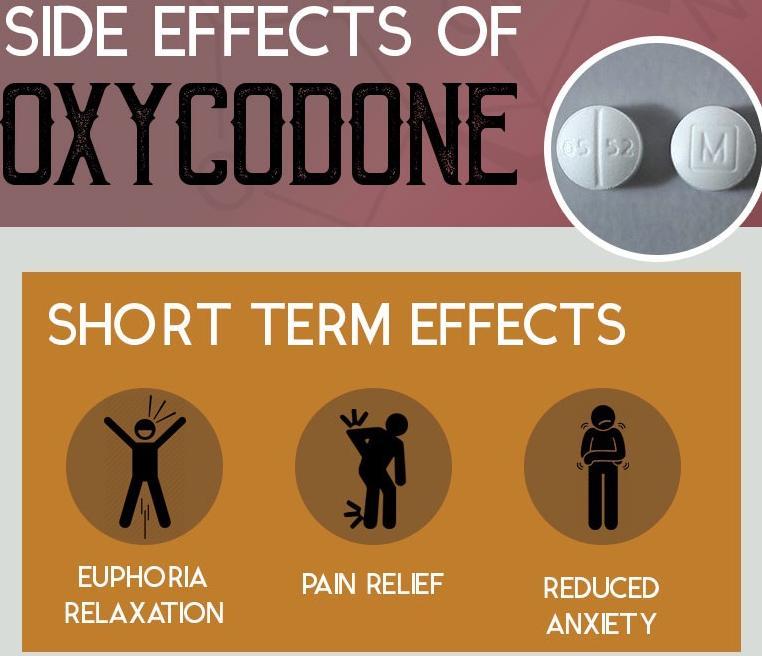- The process of creating a drug - May 23, 2023
- How do scientists model mental disorders in animals? - May 23, 2023
Introduction
Oxycodone is a potent opioid analgesic commonly prescribed for the management of moderate to severe pain. It belongs to the class of semi-synthetic opioids and has gained significant attention due to its effectiveness in pain relief. In this article, we will delve into the chemical and physical properties of Oxycodone, its synthesis process, pharmacological characteristics, observed effects, various applications, and its legal status.

https://www.youtube.com/watch?v=jDrm3nYXWdY
Oxycodone: What You Need To Know
Oxycodone Chemical and Physical Properties
Oxycodone, also known as dihydro hydroxy codeinone, belongs to the morphinan class of opioids. Oxycodone and other compounds in this class possess a polycyclic core composed of three benzene rings fused together in a zig-zag pattern referred to as a phenanthrene. A fourth ring, containing nitrogen, is fused to the phenanthrene at positions R9 and R13, with the nitrogen atom located at position R17 in the overall structure. This particular structure is known as morphinan.

Within the structure of oxycodone, as well as other morphinans, there exists an ether bridge connecting two of the rings, specifically joining positions R4 and R5 through an oxygen group. At position R6, there is a carbonyl group attached, and a methyl group is present on the nitrogen atom at position R17. The carbon-oxygen double bond of the carbonyl group saturates the benzene ring to which it is bonded. As a result, oxycodone lacks the double bond present in that ring of codeine. Additionally, oxycodone shares the 3-methoxy substitution seen in codeine; however, it possesses an additional hydroxy group at position R14. Oxycodone is comparable to other morphinans such as dihydrocodeine, heroin, ethylmorphine, and codeine. It is derived from thebaine, a natural alkaloid found in opium poppy. Chemically, Oxycodone is classified as a morphinan alkaloid and shares structural similarities with other opioids. It is synthesized as a white crystalline powder that has a molecular formula of C18H21NO4 and a molecular weight of 315.36 g/mol.
In terms of solubility, Oxycodone is sparingly soluble in water and diethyl ether but readily dissolves in organic solvents such as ethanol or methanol. It exhibits a melting point ranging from 215°C to 219°C, depending on the specific formulation and impurities present.
The physical appearance of Oxycodone can vary depending on its formulation. It is commonly available in the form of tablets, capsules, or extended-release formulations. These dosage forms are designed to release the medication gradually, allowing for sustained pain relief over an extended period.
It is worth noting that the chemical and physical properties of Oxycodone can be influenced by the presence of various additives and excipients used in pharmaceutical formulations. These additives may impact factors such as tablet disintegration time, dissolution rate, and overall drug stability.
Synthesis of Oxycodone
While recent advancements in academic syntheses of oxycodone have improved their efficiency, they still cannot match the efficiency of industrial synthesis. The industrial synthesis of oxycodone follows a three-step process using the natural alkaloid thebaine and has been in use since Freund and Speyer first reported it in 1916. Thebaine can be obtained in limited quantities from the poppy Papaver somniferum and is typically converted through biosynthesis into the more abundant codeine. In recent times, genetically modified poppies capable of producing thebaine on a large scale have been developed and are provided by Tasmanian Alkaloids. Once isolated, thebaine undergoes oxidation with a peroxy acid to yield 14-hydroxycodeinone, followed by hydrogenation to obtain the desired semi-synthetic product.

Oxycodone synthesis from thebaine
Oxycodone also can be synthesized from codeine in two reaction:


Pharmacology of Oxycodone
Oxycodone exhibits effects that are characteristic of μ-opioid agonists, indicating a pharmacological similarity to traditional opioids like codeine and morphine. These substances produce their effects by binding to and activating the μ-opioid receptor. This interaction occurs because opioids structurally resemble endogenous endorphins, which naturally occur in the body and also act on the μ-opioid receptor system. The structural resemblance of opioids to these natural endorphins leads to their euphoric, analgesic, and anxiolytic effects. Endorphins play a role in pain reduction, inducing drowsiness, and generating feelings of pleasure. They are released in response to pain, intense physical activity, orgasm, or general excitement.
In 2006, a study conducted by a Japanese research group suggested that the effect of oxycodone is mediated by different receptors in different situations. Specifically, in diabetic mice, the κ-opioid receptor appears to be involved in the direct pain relief caused by oxycodone, whereas in nondiabetic mice, the μ1-opioid receptor seems to play a primary role in these effects.
When taken orally, 20 mg of immediate-release oxycodone is considered to have an analgesic effect equivalent to 30 mg of morphine, while extended-release oxycodone is considered to be twice as potent as oral morphine.
Similar to most other opioids, oxycodone increases the secretion of prolactin, but its impact on testosterone levels is not known. Unlike morphine, oxycodone does not possess immunosuppressive activity (as measured by natural killer cell activity and interleukin 2 production in vitro), though the clinical significance of this difference has not been fully elucidated.
Oxycodone Effects
When administered appropriately under medical supervision, Oxycodone provides effective pain relief and can improve the quality of life for patients suffering from chronic pain conditions. However, it is essential to note that Oxycodone is a potent opioid and may lead to certain side effects, including sedation, respiratory depression, constipation, nausea, and potential dependence or addiction with prolonged use.

Oxycodone Short Term Effects

Oxycodone Side-Effects
Physical effects
- Pain relief
- Euphoria – When compared to other opioids, this particular substance can be deemed similar in terms of its physical euphoria to morphine or diacetylmorphine (heroin), and even more intense than kratom and hydrocodone. The experience itself can be described as an overwhelming sense of intense physical comfort, warmth, love, and bliss.
- Respiratory depression – At low to moderate doses, this effect leads to a mild to moderate slowing down of breath, but does not cause noticeable impairment. However, at high doses and in cases of overdose, opioid-induced respiratory depression can result in difficulty breathing, abnormal breathing patterns, a state of semi-consciousness, or even unconsciousness. Severe overdoses can lead to a coma or death if immediate medical attention is not sought.
- Sedation – Oxycodone is significantly less sedating than codeine but more sedating than kratom.
- Constipation
- Cough suppression
- Decreased libido
- Difficulty urinating
- Itchiness
- Nausea – This effect is more pronounced at higher doses.
- Pupil constriction
- Stomach cramps
- Appetite suppression
- Orgasm suppression
- Increased perspiration
- Skin flushing
Cognitive effects
- Euphoria – The experience of euphoria seems to arise from the activation of µ-opioid receptors and subsequent reinforcement of dopamine pathways. In comparison to other opioids, this particular substance can be regarded as having cognitive euphoria similar to morphine or diacetylmorphine (heroin), but more intense than kratom and hydrocodone. The sensation itself can be described as profound and all-encompassing feelings of emotional bliss, contentment, and happiness.
- Ego enhancement
- Anxiety relief
- Irritability – While opioids are commonly known for their mood-enhancing properties, they can also paradoxically increase sensitivity to irritable stimuli. This can manifest as detachment and sudden outbursts of anger and aggression (commonly referred to as “opiate rage”). This phenomenon appears to occur more frequently during the comedown phase of the experience and/or with heavy usage.
- Compulsive redosing
- Dream potentiation
- Increased music appreciation
Applications of Oxycodone
Oxycodone is prescribed to manage moderate to severe acute or chronic pain when other treatments are inadequate. It may enhance the quality of life for certain types of pain. However, it remains uncertain whether its use in chronic pain leads to improved quality of life or sustained pain relief.
Oxycodone is available in the form of a controlled-release tablet intended for ingestion every 12 hours. A study conducted independently from Purdue Pharma, the drug’s creator, in July 1996 revealed that the controlled-release formulation had a variable duration of action ranging from 10 to 12 hours. A review conducted in 2006 indicated that controlled-release oxycodone is comparable to immediate-release oxycodone, morphine, and hydromorphone in managing moderate to severe cancer pain, with fewer side effects than morphine. The author concluded that the controlled-release form is a valid alternative to morphine and a primary treatment option for cancer pain. In 2014, the European Association for Palliative Care recommended oral oxycodone as a secondary alternative to oral morphine for cancer pain.

In the United States, extended-release oxycodone is approved for use in children as young as eleven years old. It is approved for the relief of cancer pain, trauma pain, or pain resulting from major surgery in children who are already receiving opioid treatment and can tolerate at least 20 mg per day of oxycodone. This offers an alternative to Duragesic (fentanyl), the only other extended-release opioid analgesic approved for children.
Oxycodone Legal Status
Oxycodone is regulated by international agreements on narcotic drugs and is also subject to varying national laws. The League of Nations’ 1931 Convention for Limiting the Manufacture and Regulating the Distribution of Narcotic Drugs included oxycodone, and it was later categorized in Schedule I of the United Nations’ 1961 Single Convention on Narcotic Drugs, replacing the previous agreement.
Here are the regulations regarding oxycodone in different countries:
- Australia: Oxycodone is classified as Schedule I under the Commonwealth’s Narcotic Drugs Act 1967, derived from the Single Convention on Narcotic Drugs. It is also listed as Schedule 8 in the Australian Standard for the Uniform Scheduling of Drugs and Poisons (Poisons Standard), indicating that it is a controlled drug with restrictions on manufacture, supply, distribution, possession, and use to prevent abuse, misuse, and dependence.
- Austria: Oxycodone is legal for medical use under the Arzneimittelgesetz Österreich (AMG) but is illegal when sold or possessed without a prescription under the Suchtmittelgesetz Österreich (SMG).
- Canada: Oxycodone is classified as a controlled substance under Schedule I of the Controlled Drugs and Substances Act (CDSA).
- Germany: Oxycodone is listed in Appendix III of the Narcotics Act (Betäubungsmittelgesetz or BtMG). Only authorized healthcare professionals such as physicians, dentists, and veterinarians are allowed to prescribe oxycodone, and the federal government regulates prescriptions by imposing reporting requirements.
- Hong Kong: Oxycodone is regulated under Part I of Schedule 1 of the Dangerous Drugs Ordinance in Hong Kong.
- Russia: Oxycodone is categorized as a Schedule II controlled substance.
- Singapore: Oxycodone is classified as a Class A drug under the Misuse of Drugs Act, attracting severe penalties for offenses related to the drug, including imprisonment and corporal punishment.
- Switzerland: Oxycodone is specifically named as a controlled substance under Verzeichnis A, with permitted medicinal use.
- Turkey: Oxycodone is available only with a ‘red prescription’ and is illegal when sold or possessed without a prescription.
- UK: Oxycodone is listed as a Class A drug under the Misuse of Drugs Act.
- USA: Oxycodone is classified as a Schedule II controlled substance.
These regulations highlight the varying legal statuses and restrictions on the manufacture, supply, distribution, and possession of oxycodone in different countries.
Conclusion
Oxycodone is a valuable tool in pain management, providing effective relief for patients in need. Understanding its chemical and physical properties, synthesis process, pharmacology, effects, and applications is crucial for healthcare professionals to ensure its safe and appropriate use. The legal status of Oxycodone reflects the importance of balancing its therapeutic benefits with measures to prevent misuse and abuse. Continued research and vigilance are necessary to optimize the benefits of Oxycodone while minimizing the associated risks, ultimately improving patient care and pain management outcomes.
Bibliography
- Kalso, Eija. “Oxycodone.” Journal of pain and symptom management 29.5 (2005): 47-56. https://www.sciencedirect.com/science/article/pii/S0885392405000369
- Lugo, Ralph A., and Steven E. Kern. “The pharmacokinetics of oxycodone.” Journal of Pain & Palliative Care Pharmacotherapy 18.4 (2005): 17-30. https://www.tandfonline.com/doi/abs/10.1185/030079908X253708
- Kimishima, Atsushi, et al. “Synthesis of (−)-oxycodone.” Organic letters 16.23 (2014): 6244-6247. https://pubs.acs.org/doi/abs/10.1021/ol503175n
- https://bbgate.com/threads/oxycodone-synthesis-from-codeine.862/
- https://en.wikipedia.org/wiki/Oxycodone
- https://psychonautwiki.org/wiki/Oxycodone
- https://www.ororecovery.com/what-is-oxycodone-side-effects/

